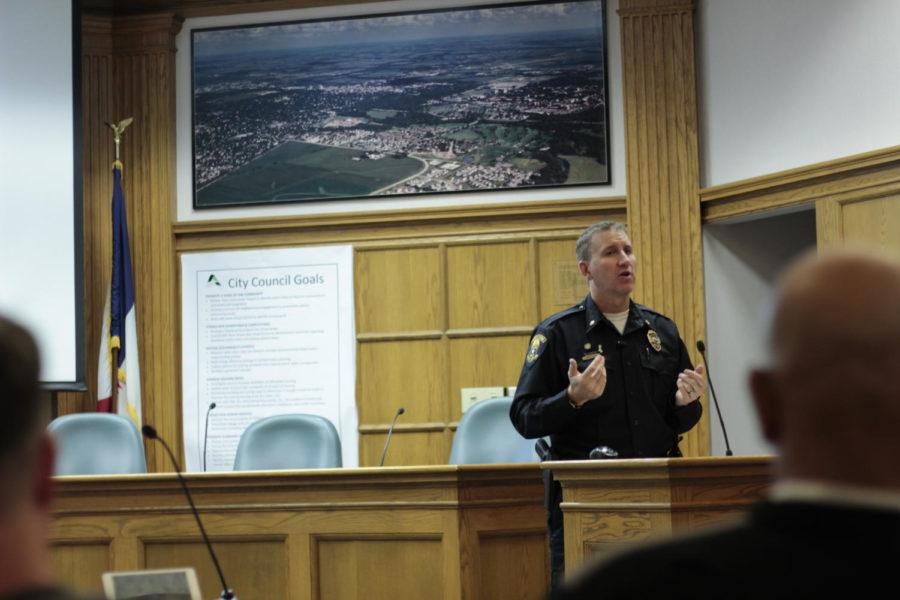Ames Police explain Miranda Rights
Audra Kincart/Iowa State Daily
Commander Geoff Huff speaks to audience in attendance of the second educational dialogue. The second educational dialogue was put on Thursday night from 6 to 7 p.m. in the Ames City Hall in concordance with the Ames Police Department and the NAACP. The topic was knowing your Miranda Rights.
October 30, 2015
How many of us can say we know what our Miranda rights are and when they apply?
The second educational dialogue, put on in concordance with the Ames Police Department and the NAACP, took place Thursday evening in the Ames City Hall.
With 15 people in attendance, Commander Geoff Huff led the conversation-style dialogue about knowing your rights.
The discussion consisted of two including Miranda rights and arrests.
“I think Miranda might be one of the most misunderstood court rulings,” Huff said.
The educational dialogue began with a ten-question test about Miranda rights that Huff then elaborated upon.
The Miranda rights are named after a convicted rapist, Ernesto Miranda. Miranda was arrested in Arizona 1963 on three charges including rape, kidnapping and armed robbery.
The police who arrested Miranda did not handle the situation as they should, explained Huff, and Miranda’s case eventually went to the Supreme Court.
The Supreme Court ruled in Miranda v. Arizona that the confession Miranda gave was useless because of how the arrest was handled; however, there was still enough evidence against Miranda that he was found guilty of the charges.
There are several misconceptions about Miranda rights.
One such misconception is that officers don’t have to read the rights word-for-word, as long as they hit the main points of:
• You have the right to remain silent.
• Anything you say can and will be used against you in the court of law.
• You have the right to an attorney.
• If you cannot afford an attorney, one will be appointed to you.
• Do you understand these rights?
“What’s the best practice?” Huff said. “Read it word-for-word.”
Another misconception is that the rights have to be read when arrested, but two conditions must be met for Miranda rights to be a part of protocol.
The first criterion is interrogation, which is fairly simple to define. Interrogation is when police ask incriminating questions.
The second criterion is custody, which is defined as when a reasonable person believes they are no longer free to leave.
This is complicated by the concept that every arrest is considered custody — but being in custody doesn’t necessarily mean an arrest.
Huff described custody as asking someone to come to the station with him, and, before asking questions, he tells the person they can leave whenever they want, and Huff will give them a ride home.
Huff explains that to a reasonable person, this would not be considered custody because the person being asked questions knows they can leave whenever.
Yet another complication to defining Miranda through interrogation is when it comes to sobriety tests. The tests used in a sobriety test — checking eyes, saying the alphabet, walking in a line — are considered non-testimonials.
A non-testimonial is asking non-incriminating questions. It uses physical signs instead of asking how many drinks the subject has had.
All in all, the majority of arrests in Ames don’t require the Miranda rights to be read.
Huff said, “75 percent of arrests don’t read Miranda.”
Barbara Woods, member of NAACP, said the event was put on to provide education to the public.
“There’s lots of information in the media about what happens with police and citizens,” Woods said. “We really want our community to be educated on what they ought to know instead of making assumptions.”
The third and final dialogue of the series will take place in February.







